
Trauma Scoring Systems
Author: Timothy H Pohlman, MD, FACS, Professor, Section of Trauma and Critical Care, Department of Surgery, Indiana University School of Medicine; Director, Surgical Critical Care,
Methodist Hospital, Clarian Health Partners, Inc
Coauthor(s): H Scott Bjerke, MD, FACS, Clinical Associate Professor, Department of Surgery, Indiana University School of Medicine, Medical Director of Trauma Services, Methodist
Hospital, Clarian Health Partners, Inc; Patrick Offner, MD, MPH, Chief, Surgical Critical Care, Department of Surgery, Trauma Services, St Anthony Central Hospital
Contributor Information and Disclosures
Updated: Jul 23, 2009
http://emedicine.medscape.com/article/434076-overview
Introduction
Characterization of injury severity is crucial to the scientific study of trauma, yet the actual measurement of
injury severity began only 50 years ago. In 1969, researchers developed the Abbreviated Injury Scale (AIS) to
grade the severity of individual injuries. Since its introduction, by the Association for the Advancement of
Automotive Medicine (AAAM) International Injury Scaling Committee (IISC), the parent organization of the AIS
modified the AIS, most recently in 2005 (AIS-2005). The AIS is the basis for the Injury Severity Score (ISS),
which is the most widely used measure of injury severity in patients with trauma. Attempting to summarize the
severity of injury in a patient with multiple traumas with a single number is difficult at best; therefore, multiple
alternative scoring systems have been proposed, each with its own problems and limitations.
This article reviews the conceptual and statistical background necessary to understand injury severity scoring,
presents the most common scoring systems, and addresses new ideas and trends in trauma scoring.
Applications of Trauma Severity Scoring
An accurate method for quantitatively summarizing injury severity has many potential applications. The ability to
predict outcome from trauma (ie, mortality) is perhaps the most fundamental use of injury severity scoring, a
use that arises from the patient's and the family's desires to know the prognosis. More recently, physicians
suggested that injury severity scoring can provide objective information for end-of-life decision-making and
resource allocation. Trauma mortality prediction in individual patients by any scoring system is limited and is in
general no better than good clinical judgment. Therefore, decisions for individual patients should never be
based solely on a statistically derived injury severity score. However, scoring systems can serve to estimate
quantitatively the level of acuity of injured patients that are applied to adjustments in hospital outcome
assessments.
Field trauma scoring also is used to facilitate rational prehospital triage decisions, thereby minimizing the time
from injury occurrence to definitive management. Similarly, physicians suggest that it can enhance appropriate
use of helicopters and timely transfer of severely injured patients to trauma wards. Trauma scoring also is used
for quality assurance by allowing evaluation of trauma care both within and between trauma centers, a
contentious and controversial area that is likely to only increase in importance.
Perhaps the most important role for injury severity scoring is in trauma care research. Scientific study of the
epidemiology of trauma and trauma outcomes would not be possible otherwise. Injury severity scoring is
indispensable in stratifying patients into comparable groups for prospective clinical trials. Similarly, this
technique can be used retrospectively to identify and control for differences in baseline injury severity between
patient populations.
Basic Statistical Concepts
Fundamentally, trauma outcome prediction is a multivariate problem. Researchers use multiple independent
variables (eg, age, injury severity) to predict the dependent variable (or outcome). Most physicians are familiar
with the simplest form of regression analysis, simple linear regression, which describes the linear relationship
between 2 variables. Multiple regression is an extension of this technique, in which more than one independent
variable is used to describe a single, continuous dependent variable. Multiple regression is advantageous
because it allows one to measure the association between a predictor variable and an outcome variable while
controlling for other modifying factors. Researchers use multiple regression, therefore, to control for the effects
of many variables and assess the independent effect of a single variable.
In trauma severity scoring, mortality is the outcome that has elicited the most interest. Mortality is a
dichotomous variable having only 2 possible values, death or survival. Although several methods are available,
multiple logistic regression is the most popular approach when the outcome of interest is dichotomous because
of some unique advantages of multiple logistic regression.
Odds is a ratio of the probability that a certain event under consideration will occur to the probability that it will
not occur.

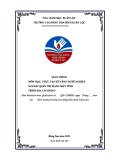

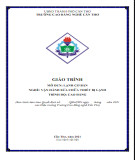
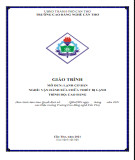
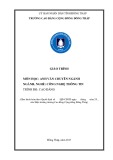
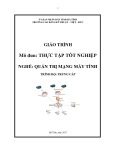



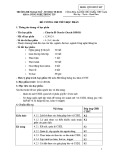








![Hệ thống quản lý cửa hàng bán thức ăn nhanh: Bài tập lớn [chuẩn nhất]](https://cdn.tailieu.vn/images/document/thumbnail/2025/20251112/nguyenhuan6724@gmail.com/135x160/54361762936114.jpg)
![Bộ câu hỏi trắc nghiệm Nhập môn Công nghệ phần mềm [mới nhất]](https://cdn.tailieu.vn/images/document/thumbnail/2025/20251111/nguyenhoangkhang07207@gmail.com/135x160/20831762916734.jpg)





